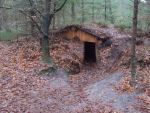Liberation Route Marker 059: The secret village
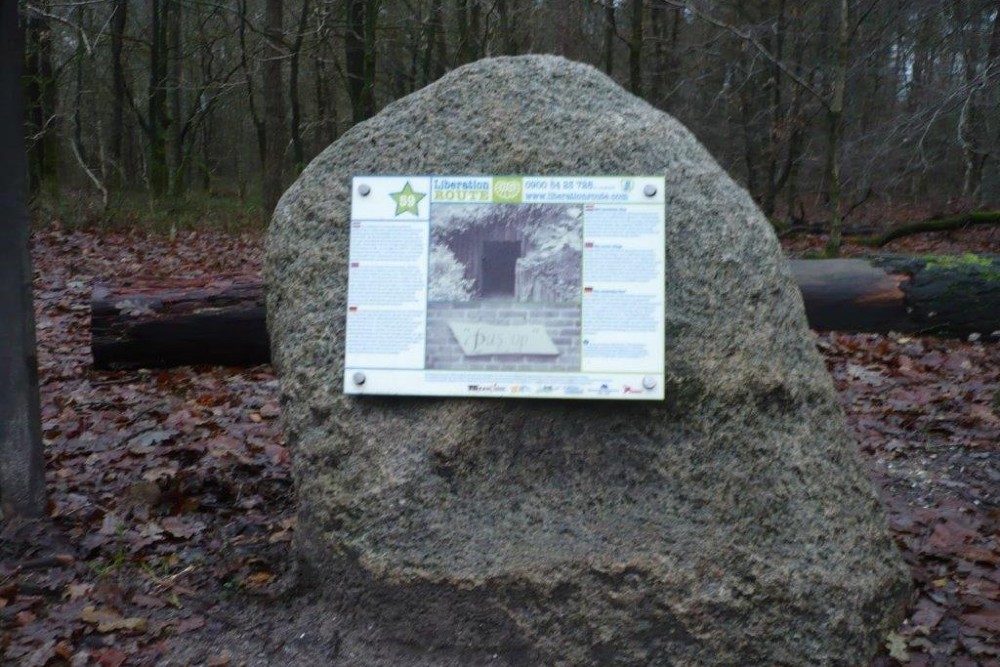
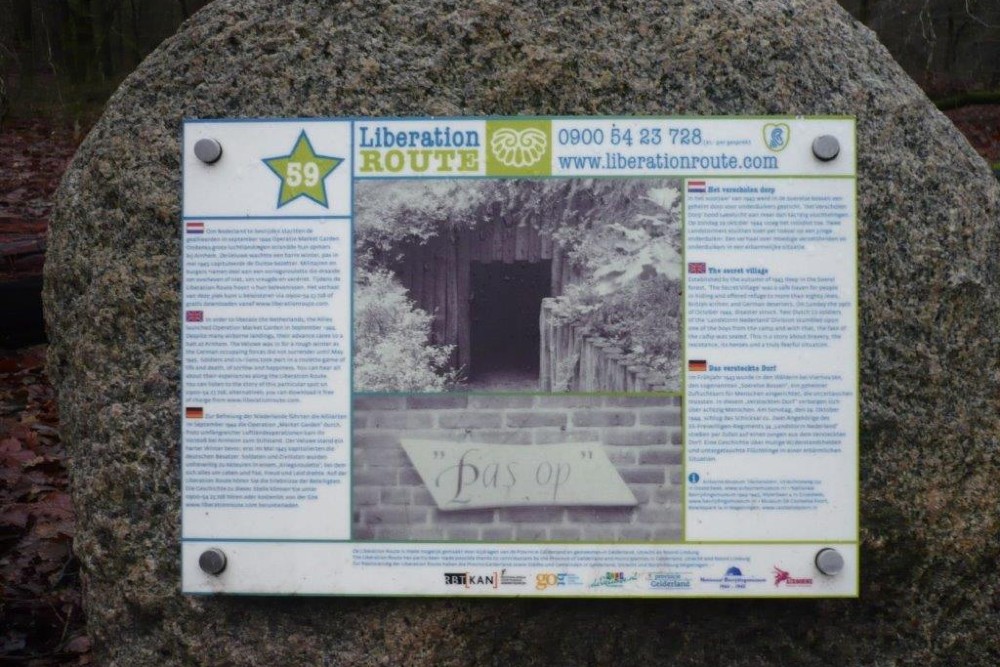
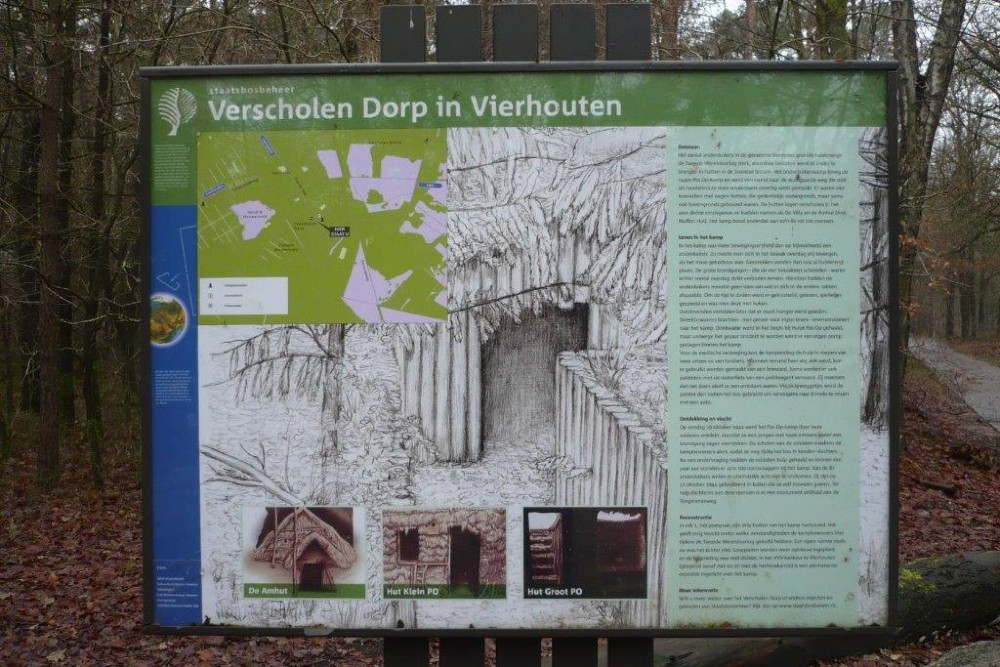
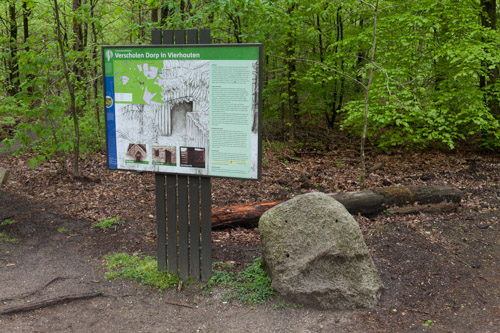
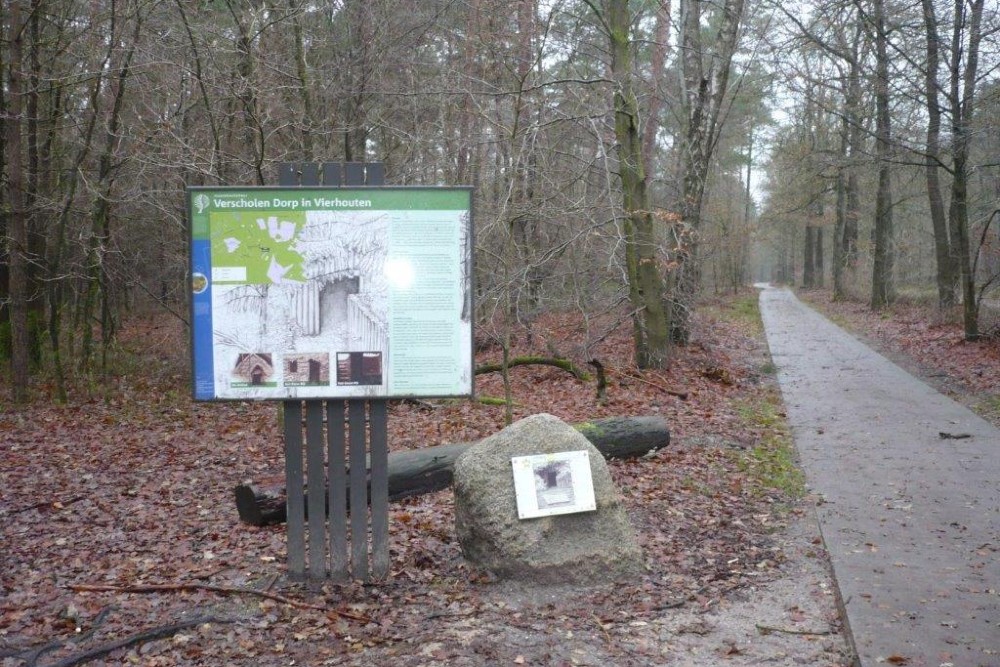
The secret village By spring 1943, a camp had established itself in the Soerelse forest near Nunspeet as a safe haven for people in hiding. The Secret Village as it was known, offered refuge to more than eighty people, among them were Jews, British airmen and German deserters. Then on Sunday the 29th of October 1944, disaster struck. Two Dutch SS soldiers of the 'Landstorm Nederland' Division, hunting in the forest, ran into one of the boys from the camp. The camp was destroyed and executions followed. Most of the refugees managed to escape. During the Second World War, a secret village had been hidden deep in the forest near Vierhouten, near the house named 'Pas Op' (Beware). It was built to provide shelter for more than 80 refugees who lived there for more than a year. It started with a couple of Jewish people in a workman's hut in the forest. Then nine huts were built where Jews, British airmen, German deserters and other refugees could be hidden. Grandpa Bakker and his wife, Aunt Cor were responsible for finding food. Others helped to find clothes, stoves, pots and pans as well as medical supplies. There were a lot of people involved and it almost went terribly wrong, twice. On Sunday 29th October 1944, the camp was discovered. Two soldiers from the "SS-Freiwilligen Regiment 83 Landstorm Nederland" (Dutch SS men) were hunting in the forest when they ran into one of the boys from the camp. The camp was destroyed that very evening and eight Jews and a German deserter were taken prisoner. The rest of the refugees managed to escape. On the 31st October, the eight Jews were shot near Vierhouten. The huts seen here now, are reconstructions that have been built since the war to replicate those that stood originally in this unique village. Audiospot - The secret village
Liberation Route Europe is a certified Cultural Route of the Council of Europe. With hundreds of sites and stories in nine European countries, the route links the main regions along the advance of the Allied Forces in 1943-1945. The entire route consists of themed routes that can be travelled by by hiking, walking, cycling and car. These routes pass numerous historical and interesting sites and tell stories from a multitude of perspectives that were important in the final phase of World War II. Many routes feature listening spots, offering the opportunity to listen to a historical story at a location. In addition, many ‘Vectors of Memory’ have been placed, indicating that the passer-by is on one of the Liberation Routes. The routes can be found on the Liberation Route Europe website or in the app through which many stories can also be listened to.Relevant info:
WebsiteSources
Text by: TracesOfWar & Liberation Route Europe
Photo(s): Arie van Wijngaarden (1,2,3,5), Arjan Vrieze (4)
